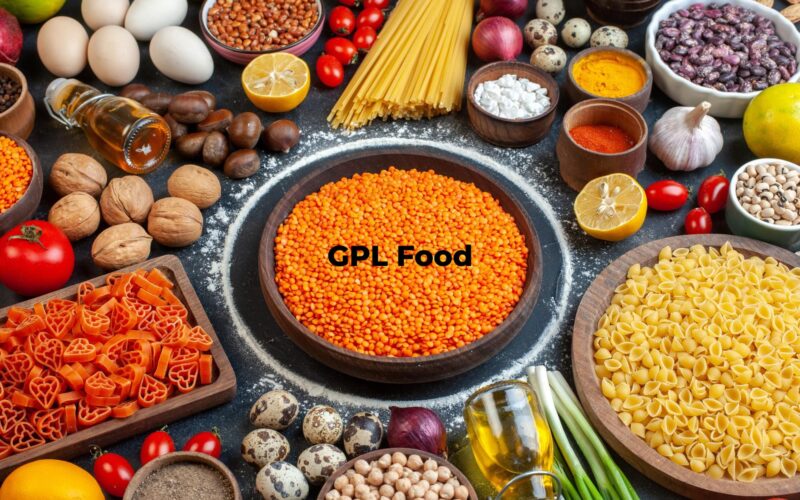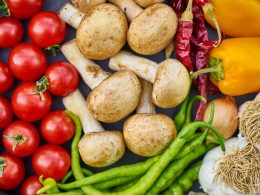The advent of GPL (Green, Pure, Local) food has set off a gastronomic revolution in a world where our food choices have far-reaching effects on our health, the environment, and local economy. In this in-depth exploration of GPL food, we will look at its history, characteristics, advantages, and the revolutionary effect it has on our eating habits.
I. Introduction
A. Definition of GPL Food
The cuisine of GPL is extraordinary. Sustainability, purity, and community support are the guiding principles. It’s about living a food-centric life that’s congruent with our principles and makes a difference in the world.
B. Importance of GPL Food in the Market
The importance of GPL food has grown in a time when people are more aware of the impact of their purchasing decisions. Rather than being a passing fad, it represents a reaction to the demand for more conscientious and moral purchasing practises.
II. The Origin of GPL Food
A. Historical Background
A rising consciousness of the health and environmental impacts of traditional food production gave rise to GPL food. There was a growing recognition of the need for change as worries about pesticides, chemicals, and the food industry’s impact on the environment intensified.
B. Evolution in the Food Industry
A paradigm change has occurred on the path from conventional to GPL cuisine. What’s important is not just the meal itself, but also the history of the cuisine and its global influence.
III. What Sets GPL Food Apart
A. Quality Standards
Strict quality requirements are upheld by GPL food. Every detail is meticulously selected to guarantee the best quality, from the soil used for cultivation to the production procedures.
B. Sustainable Practices
The concept of long-term viability is important to GPL Foods. Minimising environmental effect is the goal of the entire production process, not just the components.
IV. The GPL Food Revolution
A. Impact on Consumer Choices
The increasing popularity of GPL food goes beyond simple taste trends; it represents customers’ deliberate decision to back practises that prioritise well-being and environmental consciousness.
B. Shaping Culinary Trends
The GPL cuisine isn’t only popular in one area; it’s influencing eating trends all throughout the world. The ideas of GPL are changing the way we eat and prepare in all kinds of settings, from fancy restaurants to our own homes.
V. Key Components of GPL Food
A. Organic Ingredients
Using only organic products is fundamental to GPL cuisine. These components are safer for customers because they do not include any pesticides or genetically modified organisms.
B. Ethical Sourcing
Ethical sourcing is a focus of GPL Food, which helps local farmers and companies. Both the local economy and communal spirit are bolstered by this.
C. Eco-friendly Packaging
To show its dedication to the environment, GPL Food goes above and above by using recyclable and compostable containers. Eating less food has a less impact on the environment.
VI. Benefits of Choosing GPL Food
A. Health Advantages
In addition to being health-conscious, eating GPL food is a way to show you care about the earth. A cleaner and better dining experience is provided by GPL alternatives, which include less chemicals and additives.
B. Environmental Benefits
Soil health and decreased carbon emissions are only two of the many environmental benefits of GPL food. A more sustainable world is within reach when you choose GPL.
C. Support for Local Communities
In this way, GPL food helps local communities thrive by bolstering local farms and businesses. This is more than just a business arrangement; it’s a mutually beneficial partnership.
VII. Challenges and Solutions
A. Market Challenges
There are still obstacles, despite the fact that the GPL food movement has grown in popularity. In order to make GPL choices more accessible and affordable, creative methods are needed.
B. Innovative Solutions
Innovative solutions are employed by GPL Food in response to the issues they confront. The sector is adapting to new challenges by exploring community-supported agriculture and innovative distribution techniques.
VIII. How to Incorporate GPL Food in Your Diet
A. Tips for Consumers
Eating more GPL-approved foods need not be a daunting task. A big impact may be achieved with only a few tweaks to your grocery shopping and meal planning routine.
B. Popular GPL Food Recipes
If you’re interested in trying some Green, Pure, Local (GPL) recipes, here are a few popular ones that include green, pure, and local ingredients.
IX. The Future of GPL Food
A. Growing Trends
The increasing popularity of plant-based diets, regenerative agriculture, and the importance of transparent food supply chains bode well for the future of GPL food.
B. Anticipated Developments
We can look forward to interesting advancements in GPL food, like as improved traceability and creative agricultural practises, as awareness and technology continue to rise.
X. Consumer Perspectives on GPL Food
A. Survey Insights
More and more individuals are placing a premium on sustainability and ethical practises when making food purchases, according to consumer surveys, which suggests a change in attitude about GPL food.
B. Changing Preferences
Transparency and authenticity in food are becoming increasingly important to customers as their preferences change.
XI. Case Studies
A. Successful GPL Food Brands
Transparency and authenticity in food are becoming increasingly important to customers as their preferences change.
B. Impactful Initiatives
The GPL food movement is a great example of how communities and organisations can work together for a shared purpose, even outside the scope of individual companies.
XII. Addressing Misconceptions About GPL Food
A. Common Myths
If we want more people to learn about GPL cuisine and its advantages, we need to debunk some falsehoods.





